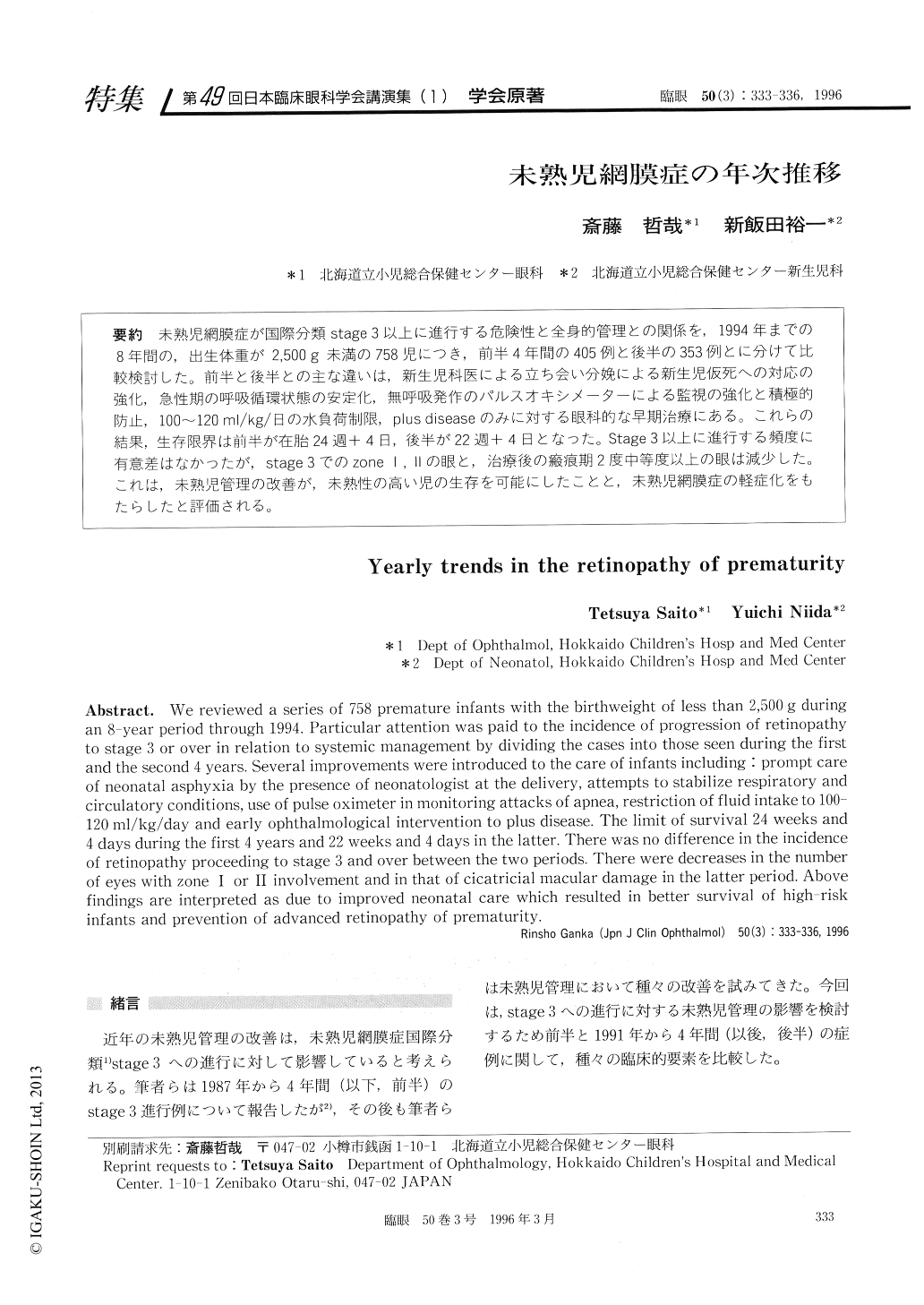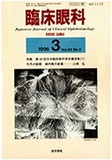Japanese
English
- 有料閲覧
- Abstract 文献概要
- 1ページ目 Look Inside
未熟児網膜症が国際分類stage 3以上に進行する危険性と全身的管理との関係を,1994年までの8年間の,出生体重が2,500g未満の758児につき,前半4年間の405例と後半の353例とに分けて比較検討した。前半と後半との主な違いは,新生児科医による立ち会い分娩による新生児仮死への対応の強化,急性期の呼吸循環状態の安定化,無呼吸発作のパルスオキシメーターによる監視の強化と積極的防止,100〜120 ml/kg/日の水負荷制限,plus diseaseのみに対する眼科的な早期治療にある。これらの結果,生存限界は前半が在胎24週+4日,後半が22週+4日となった。Stage 3以上に進行する頻度に有意差はなかったが,stage 3でのzone Ⅰ,Ⅱの眼と,治療後の瘢痕期2度中等度以上の眼は減少した。これは,未熟児管理の改善が,未熟性の高い児の生存を可能にしたことと,未熟児網膜症の軽症化をもたらしたと評価される。
We reviewed a series of 758 premature infants with the birthweight of less than 2,500 g during an 8-year period through 1994. Particular attention was paid to the incidence of progression of retinopathy to stage 3 or over in relation to systemic management by dividing the cases into those seen during the first and the second 4 years. Several improvements were introduced to the care of infants including : prompt care of neonatal asphyxia by the presence of neonatologist at the delivery, attempts to stabilize respiratory and circulatory conditions, use of pulse oximeter in monitoring attacks of apnea, restriction of fluid intake to 100-120 ml/kg/day and early ophthalmological intervention to plus disease. The limit of survival 24 weeks and 4 days during the first 4 years and 22 weeks and 4 days in the latter. There was no difference in the incidence of retinopathy proceeding to stage 3 and over between the two periods. There were decreases in the number of eyes with zone Ⅰ or Ⅱ involvement and in that of cicatricial macular damage in the latter period. Above findings are interpreted as due to improved neonatal care which resulted in better survival of high-risk infants and prevention of advanced retinopathy of prematurity.

Copyright © 1996, Igaku-Shoin Ltd. All rights reserved.


